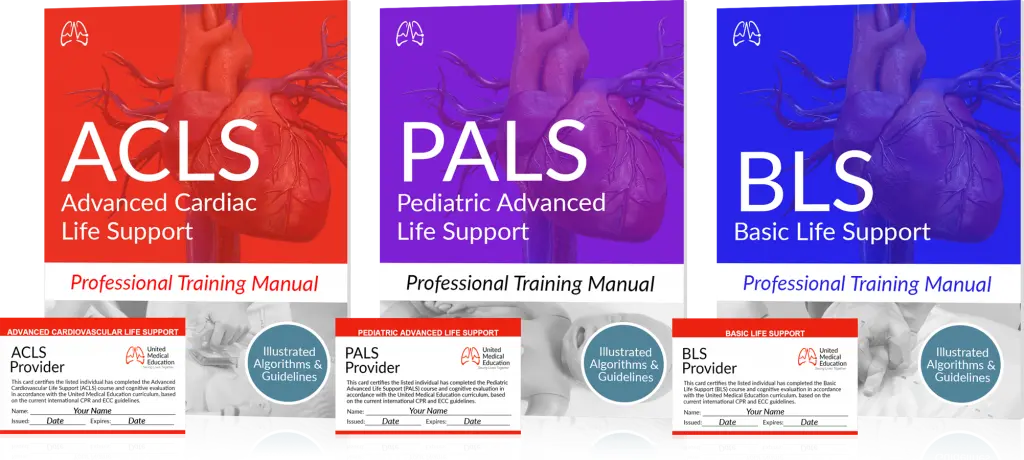When we think of physical therapy, images of stretching, strength training, and movement rehabilitation often come to mind. These are, of course, all critical aspects of the practice. But equally important is the safety of the patients undergoing therapy. This is what I want to discuss with you today.
Physical therapists are tasked with a challenging and vital role in medicine. They help patients recover, improve their mobility, and regain their individual quality of life. In the pursuit of these recovery goals, ensuring patient safety is an important part. It’s here that Basic Life Support (BLS) comes into the picture, forming an unexpected yet crucial aspect of a physical therapist’s toolkit.
BLS certification for physical therapists helps ensure a standard of medical care used in emergency situations, dramatically increasing safety in a physical therapy setting. And this is the main reason why physical therapists are required to obtain the training. But how exactly does it fit into the world of physical therapy? Let’s explore this important question.
Understanding BLS: An Essential Skillset for Physical Therapists
Basic Life Support, or BLS, encompasses several life-saving techniques used during medical emergencies, such as cardiac arrest or respiratory failure. These techniques include CPR (Cardiopulmonary Resuscitation), use of an AED (Automated External Defibrillator), and relief of choking. BLS goes beyond basic first aid; it provides an immediate response to life-threatening incidents until further medical care can be provided.
BLS training for physical therapists may not seem immediately obvious. After all, aren’t therapists primarily concerned with movement and rehabilitation? While that’s certainly true, emergencies can arise in any healthcare setting, including physical therapy.
In a typical session, physical therapists engage patients in a range of activities, from strenuous exercises to more passive treatments. These activities, while generally safe, can occasionally lead to unexpected health emergencies, such as a patient experiencing a sudden cardiac event or a choking incident. BLS training for physical therapists empowers the healthcare professional to respond promptly and effectively to these situations, potentially saving a patient’s life.
Beyond these immediate responses, BLS renewal for physical therapists also equips them with valuable skills in assessing patient conditions, recognizing signs of distress, and implementing appropriate interventions. This training, therefore, plays an integral role in strengthening the overall standard of patient care in physical therapy.
Scenarios Requiring BLS in Physical Therapy
Physical therapy is generally a safe practice, but it is not immune to the possibility of sudden emergencies. When they occur, the difference between a positive outcome and a tragic one can hinge on the immediate response of the attending physical therapist.
Consider the scenario of a patient suffering a cardiac event during a rehabilitation exercise. Their heart could stop or start to beat irregularly, compromising the flow of oxygen to the brain and other vital organs. The precious moments before an ambulance arrives are critical, and BLS-trained physical therapists are equipped to perform immediate CPR, potentially saving the patient’s life.
Similarly, a patient could unexpectedly start choking during a therapy session, perhaps due to a problem swallowing water or food. A therapist trained in BLS would know how to swiftly perform the Heimlich maneuver or other clearing techniques to relieve the obstruction, averting a life-threatening situation.
These scenarios illustrate how unpredictable medical emergencies can be and how crucial a physical therapist’s response can become in those critical moments. BLS training equips therapists with the knowledge and skills to meet these challenges head-on, ensuring patient safety at all times.
How BLS Certification Enhances Confidence and Trust
Being equipped to handle medical emergencies with BLS training does more than provide practical lifesaving skills—it can also have profound psychological benefits for both physical therapists and their patients.
For physical therapists, having BLS certification fosters a sense of confidence. They know that they have the training to respond to an emergency, reducing the uncertainty and fear that can accompany these high-stress situations. This confidence doesn’t just improve therapists’ performance in crises; it can also positively affect their day-to-day interactions with patients, enhancing their overall practice.
Trust is a key component in the relationship between a patient and their physical therapist. Patients entrust their well-being, their progress, and in some cases, their lives to their therapists. When a physical therapist is BLS certified, it sends a strong message to patients and their families. It tells them that their therapist is fully prepared to handle emergencies and prioritize patient safety—a fact that can significantly boost patients’ confidence and trust in their therapist’s abilities.
Moreover, BLS certification can also increase a physical therapist’s credibility among their professional peers and within their organization. By demonstrating a commitment to safety and patient care, BLS-certified therapists can contribute positively to the overall culture of safety in their workplaces.
Professional Advantages of BLS Certification for Physical Therapists
BLS certification does not just enhance a physical therapist’s ability to provide exceptional patient care; it also provides a competitive edge in the professional landscape. In a field where the safety and well-being of patients are paramount, possessing lifesaving skills can make a significant difference.
By achieving BLS certification, physical therapists demonstrate their commitment to patient safety, a quality highly valued by employers in healthcare. This commitment can lead to enhanced career prospects and job opportunities, as BLS certification could be a deciding factor for employers during hiring. It signals that the therapist is not only prepared for routine treatment scenarios, but also for unexpected emergencies.
Furthermore, BLS certification can play a role in opportunities for professional development and promotions. It shows readiness for increased responsibility, which can make a physical therapist a strong candidate for leadership roles. It also underscores the therapist’s dedication to continuing education and skill enhancement—key components of professional growth in the healthcare sector.
Obtaining BLS Certification: A Guide for Physical Therapists
BLS certification is a worthwhile investment for physical therapists. The process typically involves completing a course that covers essential lifesaving techniques, followed by a written examination and a practical skills evaluation.
United Medical Education offers comprehensive BLS training and certification. The course covers a range of critical topics, including cardiopulmonary resuscitation (CPR), automated external defibrillator (AED) use, and relief of choking. What’s more, it offers the convenience of online learning, allowing physical therapists to balance their professional commitments while pursuing certification.
By creating a free student account, physical therapists have access to free BLS training. United Medical Education also provides free practice exams to help prepare students for the final BLS exam. With these resources, physical therapists can gain the skills they need to effectively respond to medical emergencies, enhancing patient safety and care.
Conclusion: The Indispensable Value of BLS in Physical Therapy
The importance of BLS training in physical therapy cannot be overstated. By equipping therapists with the knowledge and skills to respond to emergencies, it strengthens patient care and enhances the safety culture within physical therapy practices. It’s an invaluable tool that fosters professional development, builds trust with patients, and opens new career opportunities.
A commitment to ongoing BLS training also serves as a testament to a physical therapist’s dedication to their patients’ welfare, reinforcing the therapeutic relationship’s foundation: care, trust, and safety. As this article has highlighted, incorporating BLS training into a physical therapist’s skill set doesn’t just benefit their practice; it ultimately contributes to the broader goal of delivering the best possible patient care.








